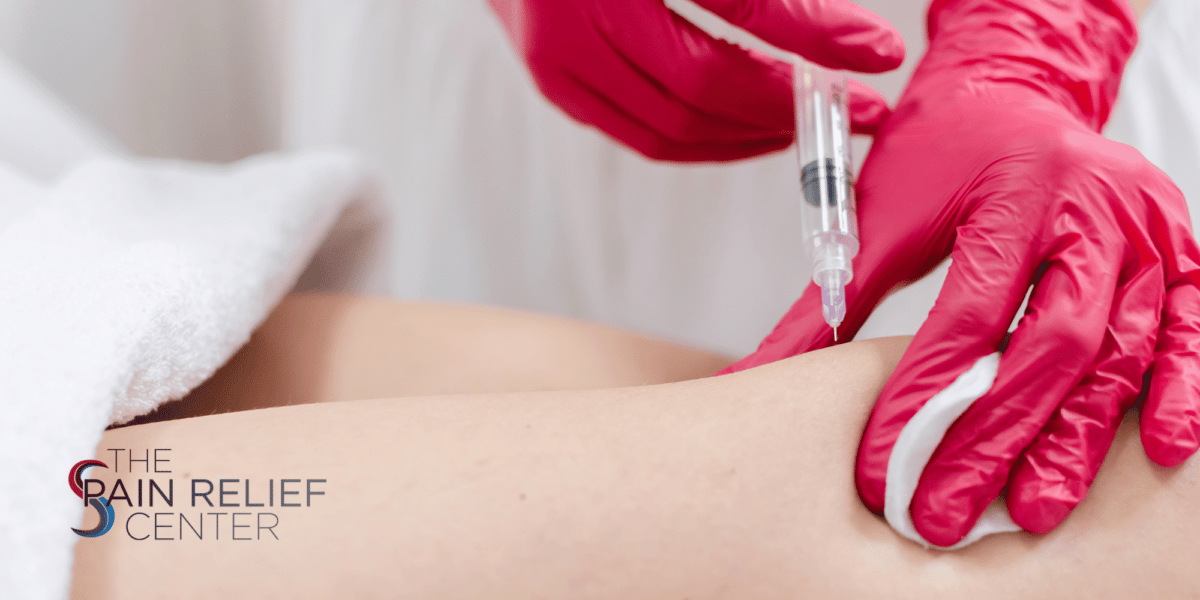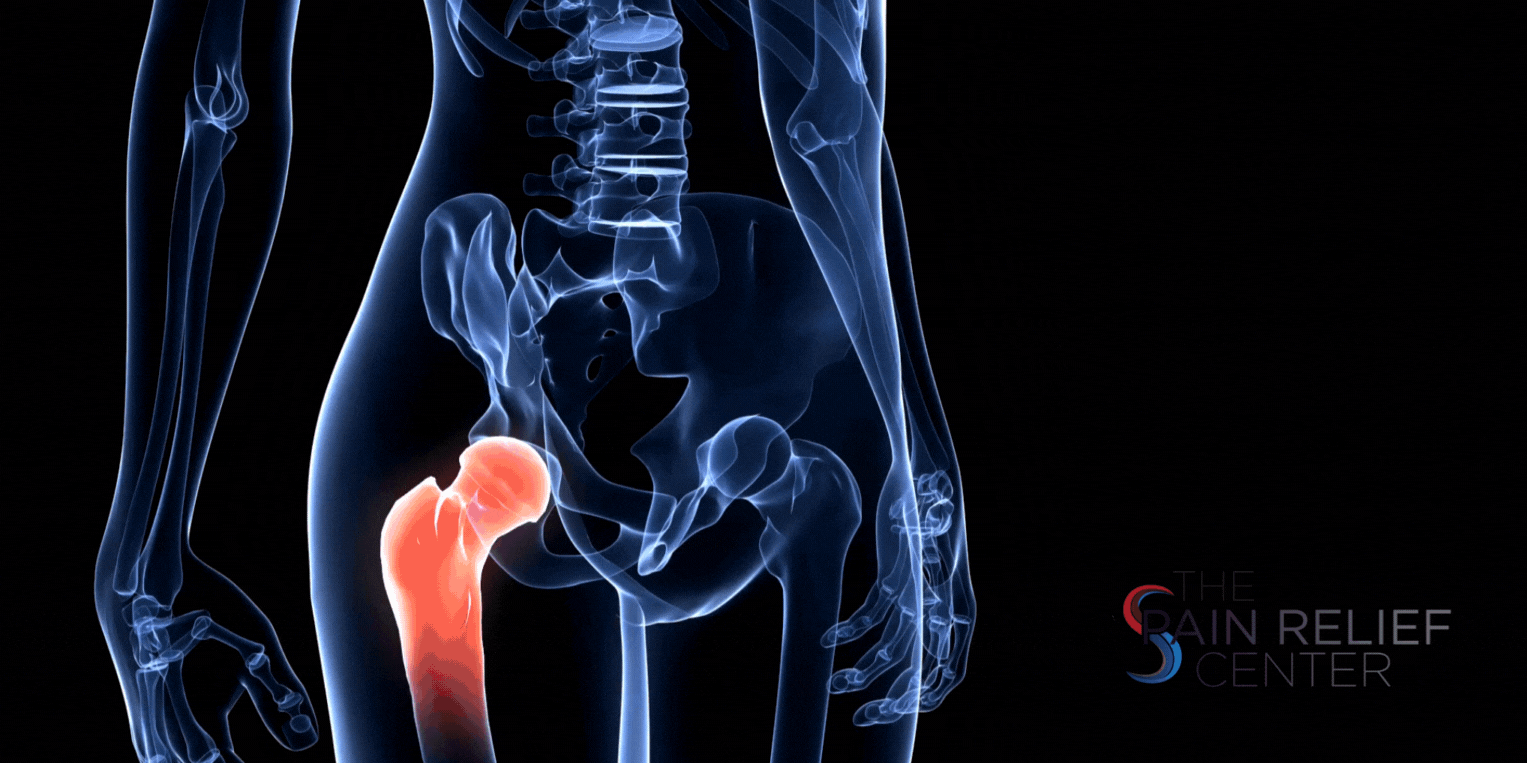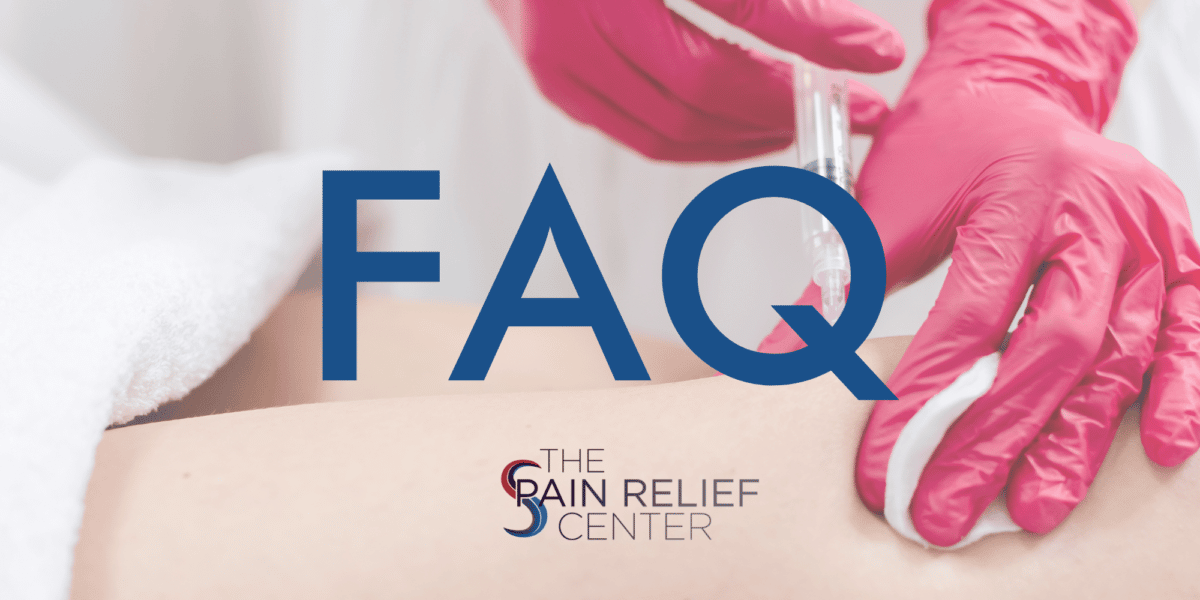HIP INJECTIONS
Hip Joint Injections for Pain Relief in Plano, Texas
Home » Treatments » Hip Injections
TREATMENT OPTIONS
Hip Injections in Dallas & Plano, TX
Your hip joint is a large joint where your leg joins your bone. If you sustain an injury, have arthritis, or experience mechanical stress, then you’re likely to experience hip pain, leg pain, lower back pain, or pain in the buttock.
At The Pain Relief Center, we may consider hip joint injections for our patients who are suffering from these symptoms. A hip joint injection can help relieve the pain associated with hip joint issues. And, in certain cases, it can also help our Plano pain relief specialists diagnose the source of pain.

What is the Purpose of Hip Joint Injections?
Patients who experience pain associated with hip joint issues may find immediate pain relief, as hip joint injections are administered directly into the hip joint. For those who experience hip pain, a nonsurgical treatment option should be considered first.
These injections have totally changed the treatment of hip osteoarthritis and other areas that are affected by hip pain.
Hip joint injections serve two major purposes:
Pain Relieving Function
Diagnostic Function
A hip joint injection is essentially a time-released corticosteroid injection. Our pain relief doctor injects this steroid directly into the joint capsule to reduce inflammation which, in turn, can offer long term pain relief for patients experiencing hip pain, leg pain, lower back pain, or pain in their buttocks.
When our physician administers the corticosteroid injection, a numbing medicine is immediately released. So, the amount of immediate pain relief experienced will help our physicians confirm of deny the hip joint as the primary source of pain.
If the patient's pain is immediately relieved once the hip joint is numb, this means that the hip joint is the primary source of pain.
Hip Joint Anatomy

Your hip joint is essentially a ball and socket joint that lies where your thigh bone meets your pelvic bone. The top of your thigh bone, or your femur, is a round ball that fits inside the socket that’s formed by the cavity in your pelvis.
A group of ligaments form a capsule around the hip joint, holding the “ball portion” in place. The group of ligaments contains synovial fluid, which helps to lubricate the area.
A thick layer of cartilage between the two bones allows you to move without creating friction.
Hip pain is often the result of arthritis, hip injury, or overuse.
Arthritis is a type of degenerative disease. It occurs when a person’s cartilage starts to shrink and become thin. This causes additional stress on the bone, which leads to inflammation and joint enlargement.
Hip Joint Injection Procedure
When our Plano pain management specialists need to administer hip joint injections, we do so with care. We will advise our patients of what they should and shouldn’t do the days leading up to the injection, as well as the days after. For most patients, we’ll advise to avoid driving or participating in any strenuous activities.
Oftentimes, we will use a fluoroscopy, or a live x-ray, as this aids in properly targeting the region and avoiding nerve damage or any other injury.
A hip joint injection procedure typically consists of the following:
- Our Plano pain relief specialists will inject an IV line, so that the patient can receive relaxation medicine, if necessary.
- We will ask the patient to lay face down on the x-ray table. Then, we’ll clean the injection site.
- Our pain management specialist will use an anesthetic, or numbing medicine, to numb a small area of the skin. We use a very small needle for this, and patients typically experience a small sting that only lasts a few seconds.
- Dr. Rodriguez will then use a realtime x-ray to guide the small needle into the hip joint. This injection contains contrast dye to ensure that the injection only reaches the joint space.
- After the contrast dye confirms that the medicine is contained, then a small mixture of anti-inflammatory cortisone and anesthetic is slowly injected into the hip joint.
After the Hip Joint Injection Procedure
Hip joint injections only take a few minutes. But, the entire hip joint injection procedure takes anywhere from 30 minutes to an hour.
After the procedure, we’ll ask the patient to remain on the table for an additional 20 to 30 minutes. After this time has passed, our Plano pain relief doctor will then ask the patient to move the are that typically causes the patient’s pain or discomfort.
Some patients may experience pain relief within the first few hours after the hip joint injection, while others may not. Whether or not the patient experiences immediate pain relief depends on whether or not the hip joint was the main source of pain for the patient.
Occasionally, patients may experience numbness or a slightly weak feeling in the leg after the hip joint injection.
Dr. Rodriguez, our Plano pain relief doctor, will discuss whether or not the patient experienced immediate pain relief. He will then ask the patient to record their pain levels during the following week. We advise patients to keep a “pain diary”. This helps us really hone in on the injection results, as well as be able to plan any future tests or pain management treatments.
Pain Relief After Hip Joint Injections
After a hip joint injection, some patients may notice a slight pain increase that lasts for several days, as the numbing medicine starts wearing off, and the corticosteroid starts to work.
For the first couple of days, if the patient needs to relieve pain, they may do so by applying ice to the area. Many times, applying a cold compress will provide more pain relief than applying heat.
If the hip joint was the primary source of pain, then the patient may notice complete pain relief a few days after the hip joint injection procedure.
But, if there isn’t any pain relief experienced, then our Plano pain management specialists may need to issue further diagnostic tests to accurately diagnose and pinpoint the patient’s source of pain.
We advise all patients to limit their pain medications for the first 4-6 hours following the hip joint injection procedure, so that we can ensure our diagnostic information is correct. Aside from this, patients can and should continue taking their regular medications.
Our pain management specialists may also refer the patient for physical therapy after the injection, while the numbing medicine is still effective, and then again, in the next several weeks, once the cortisone begins to work.
One day after hip joint injections, patients may begin to resume their regular activities. Once the patient has experienced pain relief, he or she should start to exercise regularly, in moderation. Even if a patient experiences total hip pain relief, it’s still important to gradually increase physical therapy or physical activities over the course of a week or two, in order to avoid recurrence of pain.
Hip Joint Injection Risks
No procedure comes without risks. The possible side effects of hip joint injections include:
- An allergic reaction to the medicine used
- Depigmentation, or the skin whitening
- Infection (This is extremely rare, occurring in less than 1 in 15,000 injections.)
- Local fat atrophy, or the skin thinning out
- Post-injection flare (This means that the joint swells, and the patient will endure pain for several hours after the injection.)
- Tendon rupture (This is also extremely rare.)
Long Term Hip Pain Relief
While hip joint injections are not a cure, they are effective in their ability to reduce inflammation and provide long term pain relief for an extended period.
But, for longer-lasting benefits, our Plano pain management doctors may consider more advanced regenerative procedures. This can include:
- Hyaluronic acid injections
- Platelet rich plasma, or PRP therapy
- Prolotherapy
- Stem cell therapy
These techniques help to promote the actual healing process and provide the potential for a patient’s permanent improvement.
Hip Joint Injection FAQs

How Long do Hip Joint Injections Last For?
Most patients feel significantly less pain immediately following corticosteroid injections. Pain may return in 4-6 hours, as the numbing medicine wears off. However, once the cortisone starts to work, the patient should feel significantly less pain. For many patients, the anti inflammatory properties provide relief for around 3 months.
What is the Best Injection for Hip Pain?
Corticosteroid injections that are injected into the joint are typically the most effective at treating hip pain as well as pain that’s direct cause is the hip joint. Additionally, hyaluronic acid injections or platelet rich plasma may also provide relief from pain.
How Painful is a Hip Joint Injection?
Patients may feel a slight sting that will last for a few seconds. At The Pain Relief Center, we use a numbing medicine before hip joint injections.
How Long Does it Take to Recover From a Hip Joint Injection?
Following the injection procedure, patients may experience slight pain for one to two days. But, as a proven surgery alternative for hip osteoarthritis and other hip issues, the mild pain is worth the relief it provides, for most patients.
Can I Walk After a Cortisone Injection in My Hip?
Yes. We will have you rest on the table for 20-30 minutes, and then, you’ll be able to resume normal activities. In fact, walking after any steroid shot helps to disperse the medicine and helps to prevent stiffness in the hip.
TAKE ACTION
The most critical step on the path to recovery is finding a pain management doctor who can address your pain management needs successfully. The Pain Relief Center and its five specialized institutes are dedicated to meeting any and all of a patient’s needs. Located in the Dallas-Fort Worth area, Dr. Rodriguez and his friendly staff will help you along the path to recovery.
Our new center in Dallas is part of a nationwide development by Pain Relief Centers, geared to providing individualized and comprehensive healing and pain management services with unprecedented levels of compassion, care, and comfort for each patient.

